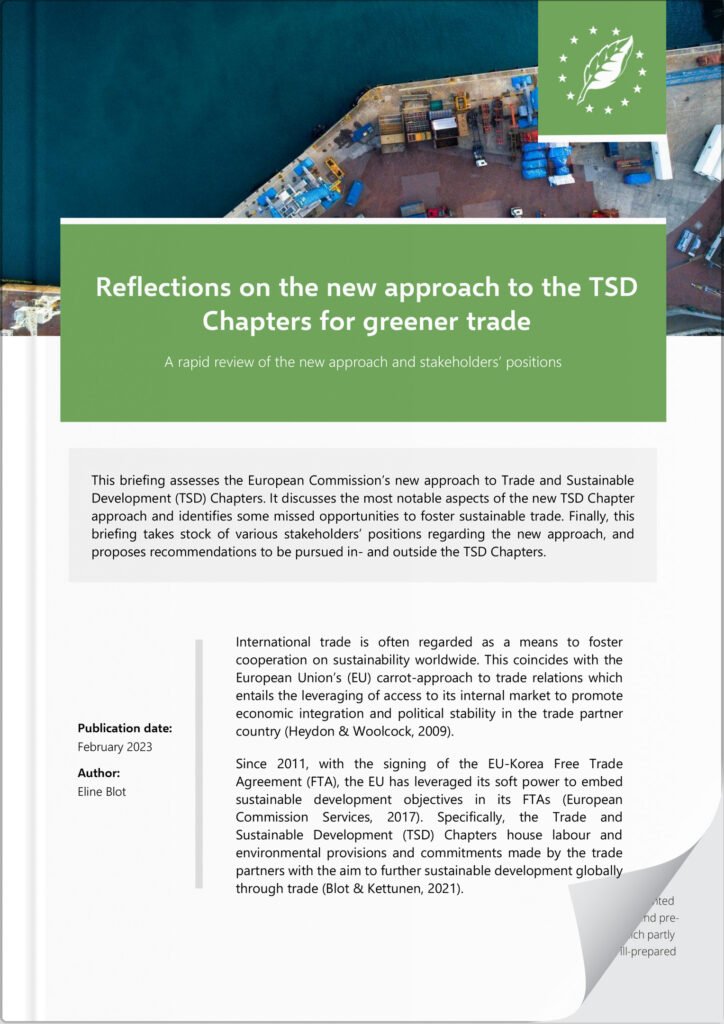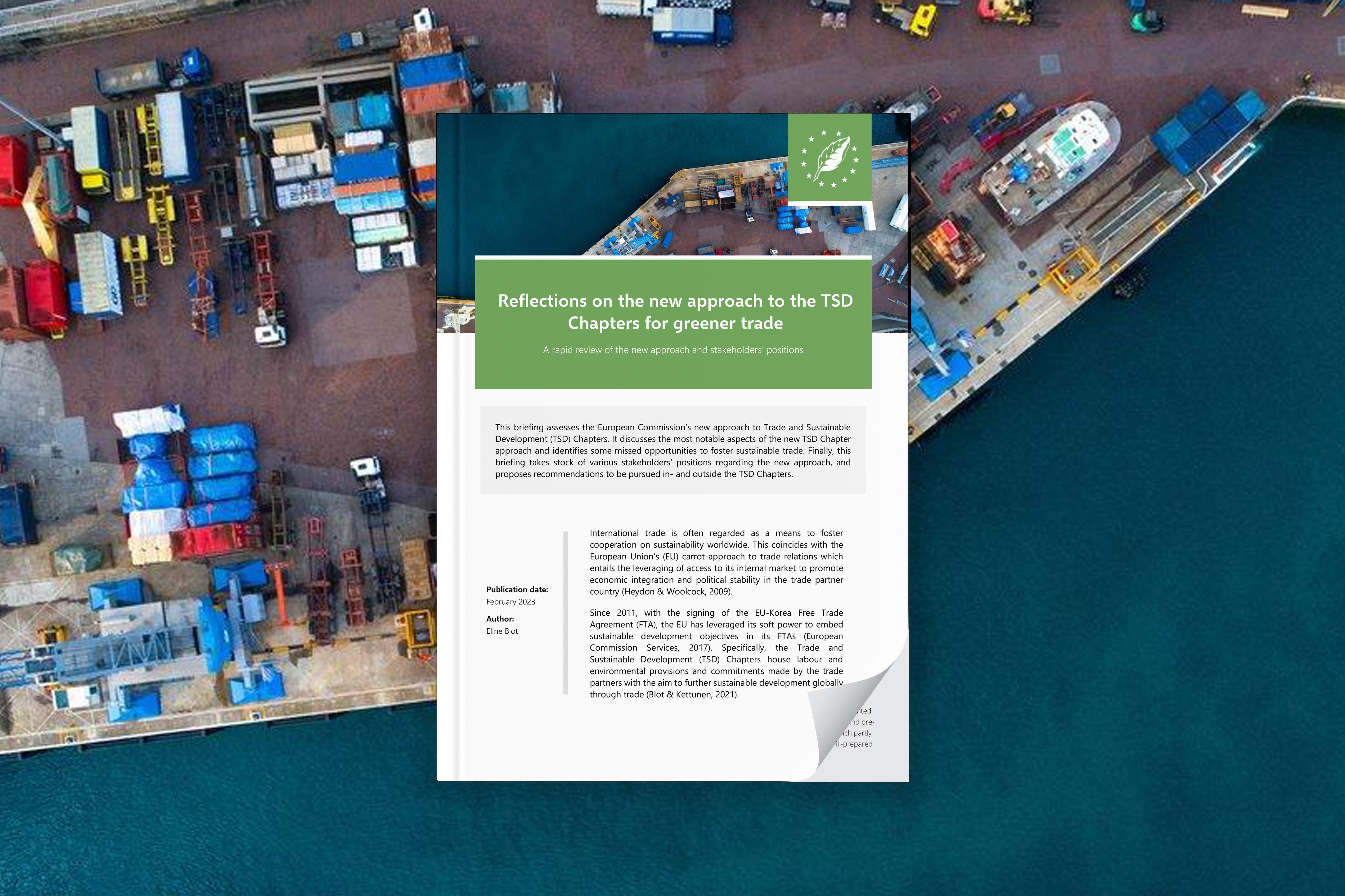AUTHOR: Eline Blot
This briefing assesses the European Commission’s new approach to TSD Chapters. It discusses the most notable aspects of the new TSD Chapter approach and takes stock of stakeholders’ positions regarding the new approach.
International trade is often regarded as a means to foster cooperation on sustainability worldwide. Since 2011, with the signing of the EU-Korea Free Trade Agreement (FTA), the EU has leveraged its soft power to embed sustainable development objectives in its FTAs. Specifically, the Trade and Sustainable Development (TSD) Chapters house labour and environmental provisions and commitments made by the trade partners with the aim to further sustainable development globally through trade.
However, in recent years, the efficacy of the TSD Chapters in delivering progress for sustainable development has been called into question. In response and acknowledging its contribution to global environmental degradation embodied in its trade patterns, the European Commission published a communication on a new TSD Action Plan in June 2022, detailing twenty action points to be undertaken to ensure that EU FTAs deliver for the environment and sustainable development.
This briefing assesses the European Commission’s new approach to TSD Chapters. It discusses the most notable aspects of the new TSD Chapter approach and identifies some missed opportunities to foster sustainable trade. Finally, this briefing takes stock of various stakeholders’ positions regarding the new approach, and proposes recommendations to be pursued in- and outside the TSD Chapters.
Overall, the new approach to the TSD Chapters is a substantial improvement compared to the existing 2018 TSD Action Plan and a definite step in the right direction to embed sustainability in EU FTAs and in general EU stakeholders commend the European Commission’s efforts on the new approach. The most appreciated aspects of the new approach include the increased focus on the monitoring and enforcement of the TSD provisions, specifically, the reinforcement of the role of the DAGs, as well as the bolstering of the TSD enforcement mechanisms, especially the Single Entry Point.
Yet, stakeholders remain cautiously optimistic with respect to the promises made by the European Commission in the TSD communication. According to stakeholders, one of the main shortfalls was that some of the most significant changes approach to the TSD Chapter to enhance the sustainability credentials of EU FTAs would not apply to existing agreements. Moreover, the approach leaves room for interpretation of certain action points, such as the applicability of the implementation roadmaps and the grounds for enforcement of the Paris Agreement.
Though the new approach is regarded among EU stakeholders as a step in the right direction to address the impacts of FTAs on global sustainability challenges, there is still work to be done to ensure trade agreements harbour sustainability at their core.
Recommendations
| Within the TSD Chapters | Outside the TSD Chapters |
|---|---|
| End the one size fits all approach to TSD Chapters and ambitiously address country-specific sustainability priorities. | Systematically leverage the SIAs and stakeholder consultations to identify country specific priorities to be taken up into the TSD Chapters. |
| Broaden the scope of multilateral environmental agreements considered an essential element to include environmental priorities beyond climate change, e.g., biodiversity loss, deforestation, and ambient pollution. | Pursue pre-agreement commitments from the trade partner that specific national policy frameworks pertaining to sustainability (such as progress on national labour laws) would be implemented irrespective of the final results of the negotiations. |
| Upgrade environmental provisions with stronger language and introduce conditionalities on market access based on the implementation of the TSD Chapter commitments. | Unbox sustainability provisions using stronger language and commitments into sector specific chapters of the FTAs. |
| Integrate lessons learned from the USMCA’s RRLM to improve the actionability and outcome delivery in the case of disputes regarding non-compliance with environment commitments. | Co-create the implementation roadmaps with local environmental stakeholders and integrate relevant international environmental targets where possible. Also clarify the enforceability of the roadmaps. |
| Establish working groups on the environment for sectors with high environmental impact, either within the TSD Chapter or in sector-specific chapters. |



